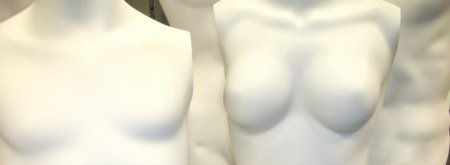Gender Identity and the Body
Transgender is a big social, cultural issue that has come to dominate our headlines, TV channels and social media feeds. How should Christians think about sex and gender in a world that celebrates our freedom to choose?
Creation is where the Bible story begins, and it is where a Christian’s thinking about transgender must begin. The Bible tells us that we did not emerge, by accident, from the cosmic soup. It states clearly that we’ve been created by a loving God. That means that, as we think about transgender, we need to remember that we are not simply talking about “issues” here, but people: precious individuals, each created and loved by God, and who, like all of us, are lost without Christ.
But it also means that we human beings are creatures, not machines – and that has a huge impact on how we think about our liberty.
True freedom, according to Scripture, is found not in asserting our radical independence and trying to be who we’re not made to be. True freedom is found in embracing and being who we are. A fish that decides to make a bid for freedom by jumping out of the water will not be free – because it is created to live in the environment of water. And as soon as we try and become what we are not, far from enjoying freedom, we can’t expect to flourish.
This conviction – that we’re creatures, not machines – has massive implications. John Wyatt, in his book Matters of Life and Death, talks about a “Lego kit”[1] view of the human body. If we have just emerged from the primeval slime by chance, then there is no design whatsoever in how we happen to be. We are simply a collection of constituent parts that can be changed and adapted as we like. You can try to improve and upgrade to a different model – you can reprogram the machine because that’s what we are. The structure of the body is value free, so if you want to change your sex, that’s fine. If you want to make yourself bionic, that’s fine too. In the words of the old Lego advert, “The only limitation is your own imagination”.[2]
Art restoration
John Wyatt contrasts that with what he calls the “art restoration view”,[3] because, in the Christian worldview, we are not machines – we are flawed masterpieces. Do you see the difference? If you see a work of art and you’re asked to restore it, you don’t look at it and say,“Well, I think he would look much nicer with a pair of spectacles”. Or, “This scene would look better with a car instead of a hay cart”. To do that is to break the code of the art restorer.
we are not machines –
we are flawed masterpieces
Art restorers respect the work, and know that their job is to bring out the artist’s original intention. They work at cleaning and restoring the vivid colours. They study the work and the painter so that they can carefully get it back to what it once was. They work so that people can see the original in all its glory.
Humanity too is the work of an artist – a divine artist. Humankind is God’s masterpiece – the pinnacle of his work of creation. Genesis tells us that when he looked at the people he had made, he declared them “very good”. So identity is not for us to create. It sounds very freeing to say, “You can become who you want to be”. But our actual identity, in that way of thinking, is completely invented, and therefore fluid, and therefore profoundly unstable.
It’s no wonder that our culture, and many individuals within it, suffer from an identity crisis. Perhaps that explains the profound insecurity and anxiety of many young people. When I was at school, the biggest decision I had to make was what subjects to choose for my exams. Now teenagers are having to consider how to define their sexuality and gender.
An insecure identity may also be behind the growing trend for visiting speakers to be “de-platformed” by Student Unions. The extreme sensitivity of some groups, and the determination of others to protect them from hearing anything that might offend them, does suggest a deep insecurity. The resulting threat to free speech has caused widespread concern.
But the Bible brings great news to our culture with its identity crisis. And great news for people who are trying to work out who they are. It’s wonderfully freeing to know that we live in a world made by a loving God, where identity is not something we’ve somehow got to create for ourselves. Our identity is a given. We’re human beings, made in the image of God; we are creatures, not machines.
What are we?
As God’s creatures we are not simply souls trapped in human bodies. He made us as physical beings; we are embodied creatures.
The ancient Greeks had a very low view of the body. The psyche, the soul, was the real you, but the body would just be discarded at death and then you’d go to the spirit realm. So in much Greek thinking, salvation was all about the freeing of the soul from the body that dragged it down. Our culture has largely returned to that mindset.
Caitlin, formerly Bruce, Jenner tweeted after she came out:
I’m so happy, after such a long struggle, to be living my true self.
Caitlin was expressing this way of thinking: my feelings are my true self, my psyche. But in the Bible’s understanding, because God created everything, the body and the whole material world is very, very good. Our bodies are an essential part of our true selves. So what I feel about myself can never be the whole picture, because God made us embodied souls. Our bodies are essential in determining and revealing who we truly are.
our bodies are essential in determining and revealing who we truly are
A low view of the body infected Christianity from the very beginning. Such thinking led some false teachers to urge believers to live an ascetic life, denying themselves physical pleasures, such as sex in marriage and the enjoyment of food. The apostle Paul strongly resisted them, insisting that “everything God created is good” (1 Timothy 4:4). All that he has created should be “received with thanksgiving” (1 Timothy 4:3). And that includes our bodies.
There were some in the church at Corinth who seemed to argue that it didn’t matter that some believers were having sex with prostitutes. Sex just involved their bodies, but their souls weren’t affected. But Paul is horrified by such thinking. He strongly opposes any dualism that divides the body and the soul: “The body…is not meant for sexual immorality, but for the Lord, and the Lord for the body…Do you not know that your bodies are temples of the Holy Spirit?” (1 Corinthians 6:13, 16). That very high view of the body is rooted in creation. Matter matters because God made it.
So we should thank the Lord for our bodies. We should echo the words of the psalmist: “You created my inmost being; you knit me together in my mother’s womb. I praise you because I am fearfully and wonderfully made” (Psalm 139:13–14). We should resist all the influences that lead so many to have a low body image and, rather than wishing we had been made differently, we should thank God for the body he has given us.
It’s true that our bodies have been affected by the fall. Living in a fallen creation means that sadly, bodies are born with deformities and get sick. Accepting our bodies as gifts from God certainly doesn’t mean that it’s wrong to try and correct what’s wrong with them and seek to bring healing. But as we do so, we should follow the “art restoration principle”. The aim is to restore the Creator’s intention; but we are not to try to change it. And that will certainly mean accepting the sex that he has given me.
We are sexual creatures
God made us embodied creatures and he also made us sexual creatures: “male and female he created them” (Genesis 1:21).
We’re not just people who happen to have male or female genitalia. We are created men and women, and our sex, in the Bible’s understanding, is fundamental to who we are.
We discover later in the Bible that the distinction between male and female is fundamental in contributing to a picture of the gospel and to the meaning and purpose of life. So we can’t simply discredit it as the expression of some backward, ancient culture. The fact of the creation of human beings as male and female is woven deep into the fabric of the Bible’s story, and therefore into the understanding of the world and ourselves that Christians embrace.
the creation of human beings as male and female is woven deep into the fabric of the Bible’s story
In Ephesians 5 the apostle Paul quotes the words of Genesis 2:24, which describe God’s design for human marriage, with a man and a woman being joined together in “one flesh”. He then writes:
This is a profound mystery – but I am talking about Christ and the church. (Ephesians 5:32)
He is saying that the distinction between men and women reflects the distinction between God and human beings. And the coming together of a man and woman in the deep union of marriage is a reflection of God’s desire for us to be united with him – which has now been made possible through Christ. Christ’s church – those who trust in him – is his bride (Revelation 21:2). This picture only works because of the difference of the sexes. Two men or two women can’t reflect the marriage of Christ and his church. The image requires the union of two distinct and different, but complementary, “others”.
So, as God’s creatures, we are embodied and sexual. And if we submit to the Creator, we’re to accept our bodies and accept our biological sex as good gifts from him and seek to live accordingly. That view of who we are, stated at the very start of the Bible in Genesis 1:27, is quoted and affirmed by Jesus in Matthew 19:4.
That way of thinking, I take it, is the basis of the Bible’s prohibition on cross-dressing:
A woman must not wear men's clothing, nor a man wear women's clothing, for the Lord your God detests anyone who does this. (Deuteronomy 22:5)
What the Bible doesn’t say
It’s worth saying at this point that we should beware of pushing the Bible further than it goes. What you don’t find in the Bible are lots of rigid rules about what it means to be a man and what it means to be a woman.
Often cultures will develop inflexible social codes that limit what is deemed to be masculine or feminine. But these go way beyond what the Bible says, and can lead to real tension and difficulty for those who don’t quite fit those patterns.
each person’s biologically-determined sex
is a good gift of God’s creation
So the boy who loves dolls and prefers ballet to football may be branded as “gay” or “girly”. And the girl who prefers Action Man to Barbie and likes to climb trees is labelled a tomboy. Scripture nowhere gives a clear, narrow set of rules as to what a man or woman should be like, or a boy or girl.
So let’s not forget that, yes, there are fundamental differences between men and women, but there are also many differences between men and men, and women and women. We’re not to push the Bible beyond where it goes. But the basic message of creation is this: each person’s biologically-determined sex is a good gift of God’s creation. We should accept it and live within it.
One friend of mine, Sam Allberry, summed it up in these two tweets:
Our culture says: Your psychology is your sexual identity – let your body be conformed to it.
The Bible says: Your body is your sexual identity – let your mind be conformed to it.
This is by no means all there is to say on the matter! But a proper understanding of creation has to be the first building block if we are to understand the Christian perspective on transgender.
References
[1] John Wyatt, Matters of Life and Death, (Nottingham: IVP, 2009, 2nd Ed), p.35
[2] Wyatt, p.35
[3] Wyatt, p.97-100



